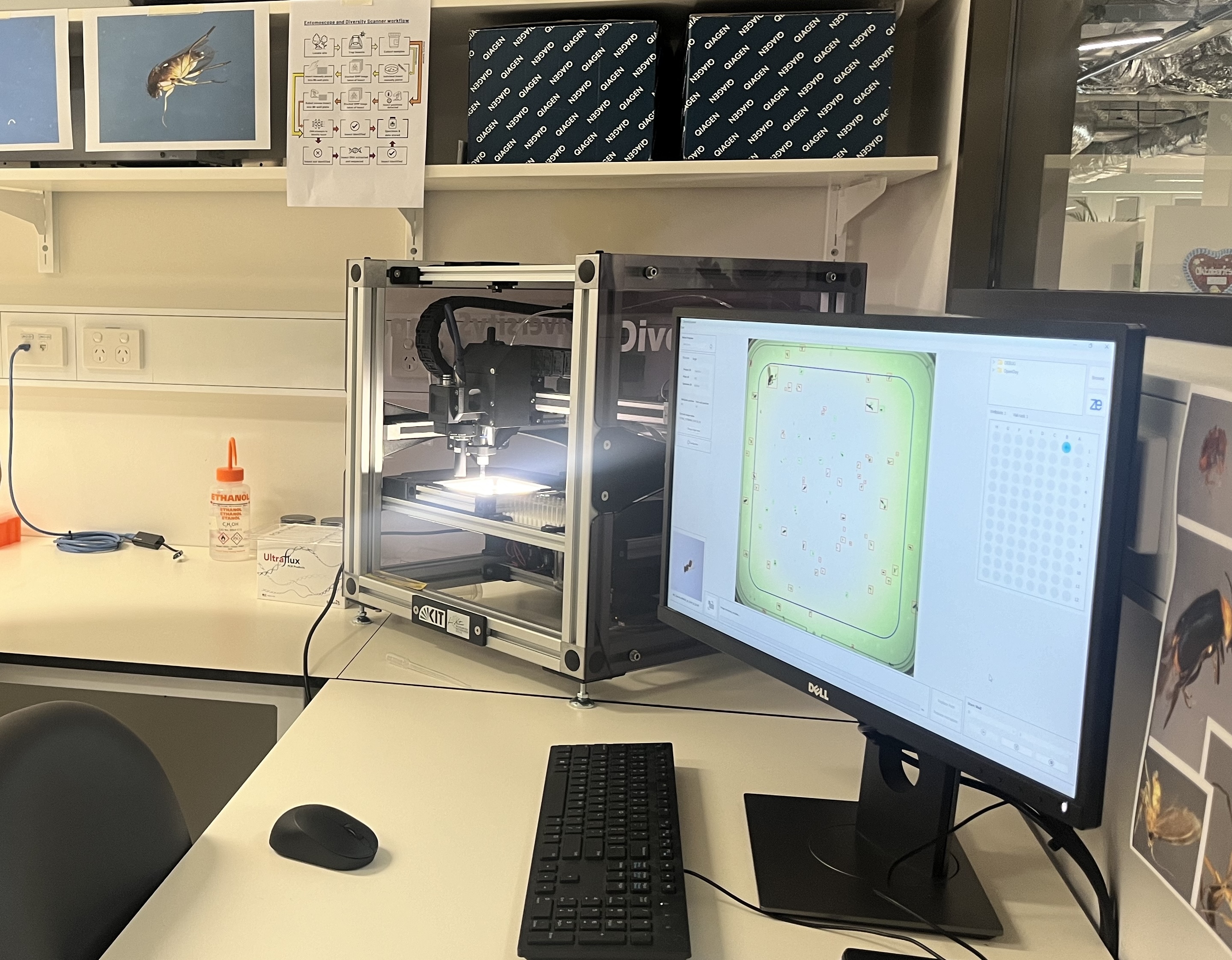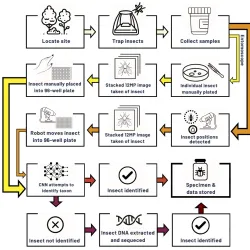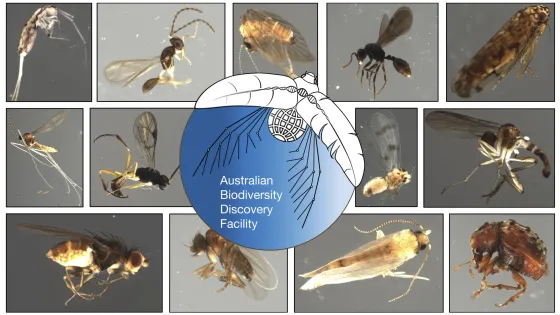
Australian Biodiversity Discovery Facility
A CBA initiative that aims to establish the DiversityScanner technology, a novel combination of robotics, genomics and AI, in Australia to advance biodiversity monitoring and discovery.

DiversityScanner is novel technology that combines robotics, high-throughput genomic sequencing and machine learning to scan, classify and quantify invertebrate taxa from bulk environmental samples. The Centre for Biodiversity Analysis has worked with developers Rudolf Meier (Museum fur Naturkunde) and Lorenz Wührl and Christian Pylatiuk (Karlsruher Institut für Technologie) and their collaborators to bring this technology and associated workflows to Australia to build capacity and aid the monitoring and discovery of Australia’s invertebrate biodiversity.
As the initial step towards this national capability, we have established the Australian Biodiversity Discovery Facility (ABDF) to which researchers and managers can bring samples for processing and training and to experiment and co-develop projects. The ABDF builds on existing expertise at ANU, University of Canberra and CSIRO in high-throughput genetic barcoding and image analysis and bring together geneticists, ecologists, taxonomists, computer scientists and engineers to adapt this technology to the Australian context and work to expand its application.

"The little things that run the world" Edward O. Wilson (1987)
With strides being made to improve Australia’s track record in biodiversity loss by 2030, and the establishment of the new Nature Repair Market Bill, it is imperative that we begin to account for the 95% of animal diversity that is currently largely neglected in biodiversity surveys and monitoring.
Invertebrates are widely regarded as powerful monitoring tools in environmental management because of their great abundance and diversity, functional importance, sensitivity to change, and ease of sampling. But samples typically include many small, undiscovered, undescribed species - "dark taxa"- that present a particular challenge for biodiversity analysis. The taxonomic expertise and time required, and subsequent costs, to process samples makes their inclusion simply impractical for most environmental monitoring and assessment.
As herbivores, predators, parasitoids, decomposers, and pollinators, invertebrates disperse seeds, control pest populations, cycle nutrients, maintain soil structure and fertility, pollinate plants, and are a major prey source for other taxa. This new technology will significantly advance the documenting of their tremendous diversity and abundance, and allow these critical ecosystem services to finally be considered in on-ground conservation and rehabilitation efforts.
The technology will also achieve a step change in the rate at which new species are discovered and described (a key goal of goal of the Decadal Plan for Taxonomy), and has considerable potential for biosecurity monitoring and other research and management areas dealing with large, intractable samples of small taxa with high species diversity and abundance.
Location
Centre for Biodiversity Analysis
Research School of Biology
The Australian National University
Canberra










